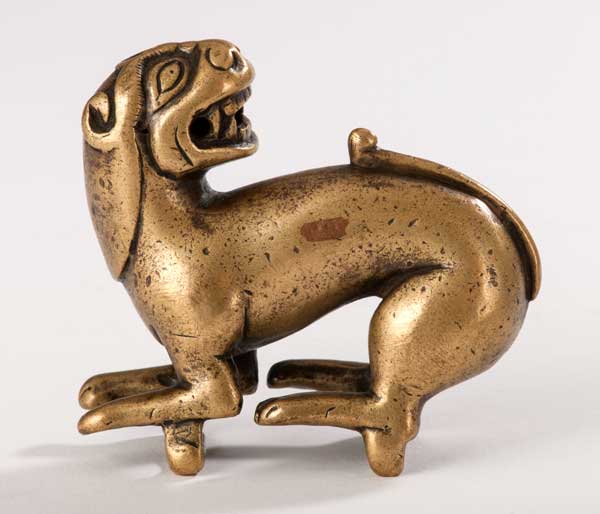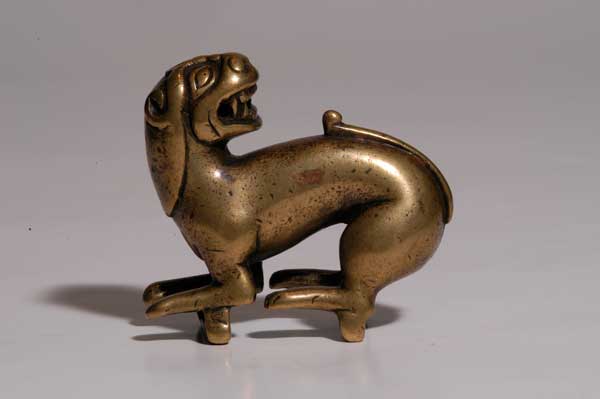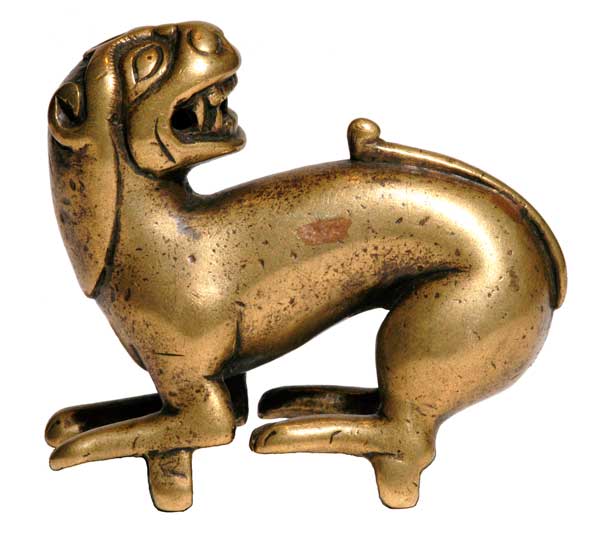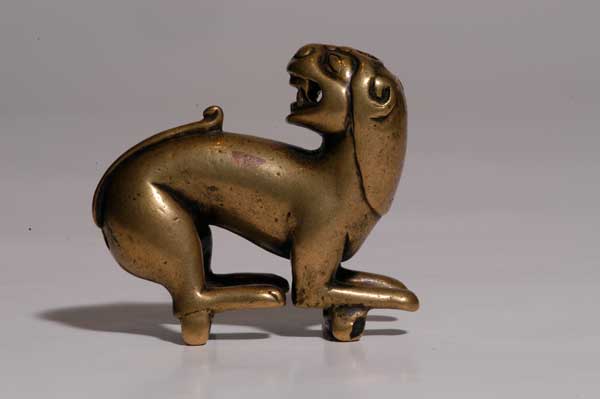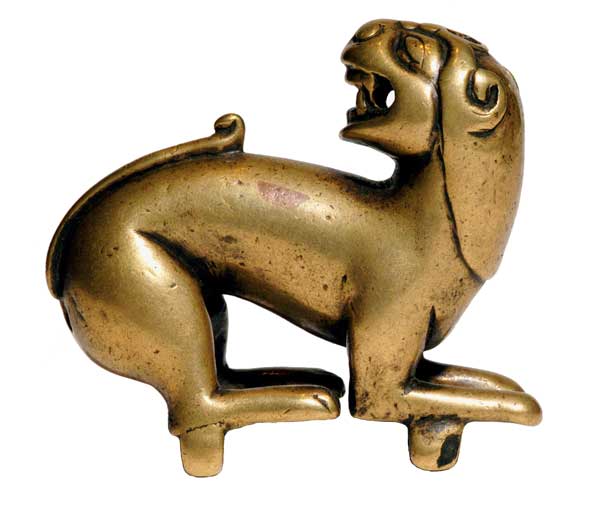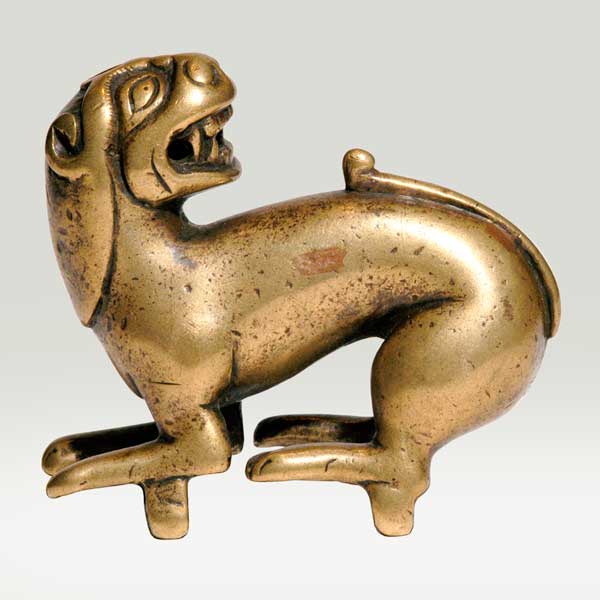ABS 251
Code: ABS 251
Country: Tibet
Style: Imperial Period (Yarlung)
Date: 800 - 900
Dimensions in cm WxHxD: 6.5 x 6 x 2.6
Materials: Brass
Squatting and hissing lion, looking backwards
This statue of a squatting lion appears to be very early and may date back to the Tibetan imperial dynasty, also called Yarlung dynasty. As indicated by the tenons of the pair of feet, the lion was probably attached to an object, possibly a vessel. According to archaeological and literary references, sculptures of animals and especially of lions were very popular among the Tibetans of that period.
In Indian culture, lion is considered a symbol of royalty. In Buddhism, lions are a symbol of the historical Buddha Shakyamuni who is called “the lion of the Shakyas.” Similarly, the bodhisattvas, known as sons of the Victors, are also described as “lions among men.” In the iconography, lions often appear supporting precious thrones (ABP 003, 005...). They also often serve as mounts for deities, for instance Vaishravana God of wealth (ABP 031), or for some manifestations of Avalokiteshvara and Mañjushri (ABS 360). They are also found on various ornaments, sometimes in pairs, guarding the entrances of monasteries and shrines or tombs.
In Tibet, the lion becomes a snow lion, a mythical white fur creature with a turquoise or an orange mane, living on the snowy summits. They are depicted bearing a wrathful expression with eyes and mouth wide open. Freely they roam in the high snowy mountains, symbolising the wisdom, fearlessness and sacred dignity of those dharma practitioners who live in the pure mind, free of any delusions.
This statue of a squatting lion appears to be very early and may date back to the Tibetan imperial dynasty, also called Yarlung dynasty. As indicated by the tenons of the pair of feet, the lion was probably attached to an object, possibly a vessel. According to archaeological and literary references, sculptures of animals and especially of lions were very popular among the Tibetans of that period.
In Indian culture, lion is considered a symbol of royalty. In Buddhism, lions are a symbol of the historical Buddha Shakyamuni who is called “the lion of the Shakyas.” Similarly, the bodhisattvas, known as sons of the Victors, are also described as “lions among men.” In the iconography, lions often appear supporting precious thrones (ABP 003, 005...). They also often serve as mounts for deities, for instance Vaishravana God of wealth (ABP 031), or for some manifestations of Avalokiteshvara and Mañjushri (ABS 360). They are also found on various ornaments, sometimes in pairs, guarding the entrances of monasteries and shrines or tombs.
In Tibet, the lion becomes a snow lion, a mythical white fur creature with a turquoise or an orange mane, living on the snowy summits. They are depicted bearing a wrathful expression with eyes and mouth wide open. Freely they roam in the high snowy mountains, symbolising the wisdom, fearlessness and sacred dignity of those dharma practitioners who live in the pure mind, free of any delusions.

